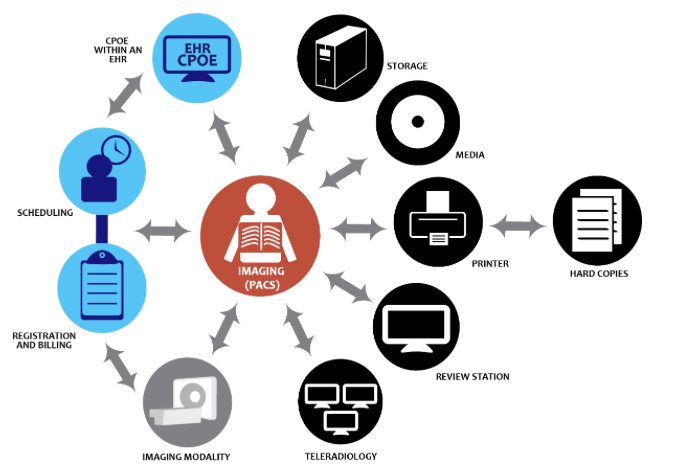Beginning Mandarin Chinese course for independent learners to study Chinese language (pinyin and characters) and culture.
Beginning Chinese 1 for Independent Learners
$10
- Description
- What students will learn
- Course outline with learning objectives
- Other course details
- System requirements
Description
Beginning Chinese 1 is an introductory Mandarin Chinese course for independent learners, authored by Dr. Sue-mei Wu of Carnegie Mellon University. The course aims to help beginners develop competence in listening, speaking, reading, writing, and Chinese culture. Learners will start with a unit on pinyin, including how to produce the different Chinese tones in speech and how to represent them in written letters. Each of the following units is centered around an authentic video in Chinese. Students interact with the audio elements of the videos and are encouraged to explore the traditional and/or simplified character representations throughout the course.
Each lesson includes helpful vocabulary and grammar structures for navigating greetings and introductions, describing one’s family and friends, and talking about daily activities. Cultural readings and videos help learners to make connections between Chinese culture and their own culture(s). Lessons culminate in a lesson test where learners can practice that lesson’s content.
Find out more about this course in the article “Chinese Online Teaching and Learning: The CMU OLI Chinese Online Program”
What students will learn
By the time they finish this course, students will learn or be able to:
- Distinguish the tones and use pinyin
- Greet someone in Chinese
- Introduce themselves
- Express their nationality and talk about their languages
- Describe themselves and their family members
- Make a short phone call in Chinese
- Describe their daily schedules
Course outline with learning objectives
Unit 1: Foundations
Module 1: Pinyin Intro
- Differentiate the four tones in Pinyin
Module 2: Palatal, Dental, and Retroflex Initials
- Recognize the difference in pronunciation for pinyin initials
Module 3: Compound Finals
- Distinguish the compound finals in Pinyin
Module 4: Nasal Finals
- Distinguish the nasal finals in Pinyin
Module 5: Special Pinyin Rules
- Describe the special pinyin rules for finals, initials, and tone changes
Module 6: Pinyin Review Exercises
- Distinguish the 6 vowels and 21 initials in Pinyin
- Determine the correct tone and syllable for a pronounced pinyin or phrase
- Articulate tongue twisters in Chinese with the provided Chinese characters and/or Pinyin
Module 7: Basic Chinese Expressions
- Use basic Chinese phrases for numbers and greetings
Module 8: Unit Test
Unit 2 Greetings
Module 9: Main Content
- Greet someone with the proper vocabulary and Chinese greeting customs
Module 10: Listening
- Identify the main topics discussed in a conversation
- Construct a logical conversation based on given sentences
Module 11: Grammar
- Explain one’s occupation and those of others
Module 12: Reading Exercises
- Identify the main topics discussed in a text
Module 13: Consolidation Exercises
- Provide the correct pinyin after listening to an audio excerpt
Module 14: Culture Link
- Make comparisons between Chinese-speaking cultures and one’s own culture
Module 15: Unit Test
Unit 3: Names
Module 16: Main Content
- Greet someone with the proper vocabulary and politeness of Chinese greeting customs
Module 17: Listening
- Construct a complete sentence based on an audio excerpt
- Translate the content of audio excerpts
Module 18: Grammar
- Formulate a conversation in Chinese about name, characteristics, and occupation
- Practice the proper usage of the particle 的
- Determine the correct plural pronoun to used based on the given point of view
Module 19: Reading Exercises
- Make an inference about someone based on the given text
- Intepret the meaning of a word based on a given text
Module 20: Consolidation Exercises
- Construct a logical conversation based on given sentences
Module 21: Culture Link
- Make comparisons between Chinese culture and one’s own culture of naming children
Module 22: Unit Test
Unit 4: Nationalities
Module 23: Main Content
- Employ the patterns of country name, nationality, and world languages in Chinese
Module 24: Listening
- Describe the main action in the given scenario
- Identify the relationship between different characters in a scene
Module 25: Grammar
- Determine the correct demonstrative pronoun based on context
Module 26: Reading Exercises
- Ask and answer questions in Chinese about a character or location
Module 27: Consolidation Exercises
- Paraphrase an audio segment without modifying its meaning
Module 28: Culture Link
- Make comparisons between Chinese and one’s own culture of native/ethnic attachments
Module 29: Unit Test
Unit 5: Studies
Module 30: Main Content
- Employ common phrases to discuss one’s study
Module 31: Listening
- Identify what subject areas characters enjoy studying
Module 32: Grammar
- Distinguish the subject and predicate in a sentence
- Determine the most appropriate measure word for a given subject, item, or event
Module 33: Reading Exercises
- Identify the main topics discussed in a text
Module 34: Consolidation Exercises
- Associate an adjective with the corresponding subject matter
Module 35: Culture Link
- Make cultural comparisons about name writing customs
Module 36: Unit Test
Unit 6: Self and Family
Module 37: Main Content
- Recognize occupational vocabulary for jobs
Module 38: Listening
- Identify the main topics discussed in a conversation
Module 39: Grammar
- Determine measure words for a given subject, item, or event
- Construct sentences with commonly used sentence structure/pattern (i.e. 是…的…)
Module 40: Reading Exercises
- Distinguish the characteristics of different people in a family
Module 41: Consolidation Exercises
- Count numbers in Chinese
Module 42: Culture Link
- Make cultural comparisons about family reunions
Module 43: Unit Test
Unit 7: Phone Calls
Module 44: Main Content
- Use vocabulary for phone call etiquette
Module 45: Listening
- Identify the ongoing action in a sentence
Module 46: Grammar
- Determine the proper usage of question words (i.e. 哪)
- Employ the use of common sentence pattern (A 不 A pattern)
- Construct sentences with proper tag questions
Module 47: Reading Exercises
- Identify the setting in a given image
Module 48: Consolidation Exercises
- Construct a logical conversation based on given sentences
- Ask questions in Chinese about a character or location with proper tag questions
Module 49: Culture Link
- Make cultural comparisons about phone call customs
Module 50: Unit Test
Unit 8: Daily Schedule
Module 51: Main Content
- Tell time in Chinese
Module 52: Listening
- Make inferences about one’s daily schedule
- Determine the time frame mentioned in a dialogue or text
Module 53: Grammar
- Construct phrases and sentences with particles
- Employ the use of common sentence pattern (从…到… pattern)
Module 54: Reading Exercises
- Determine the time frame mentioned in a dialogue or text
Module 55: Consolidation Exercises
- Construct a logical conversation based on given sentences
Module 56: Culture Link
- Make cultural comparisons about fortune telling and gift giving
Module 57: Unit Test
Other course details
System requirements
OLI system requirements, regardless of course:
- internet access
- an operating system that supports the latest browser update
- the latest browser update (Chrome recommended; Firefox, Safari supported; Edge and Internet Explorer are supported but not recommended)
- pop-ups enabled
- cookies enabled
Some courses include exercises with exceptions to these requirements, such as technology that cannot be used on mobile devices.
This course’s system requirements:
- none






